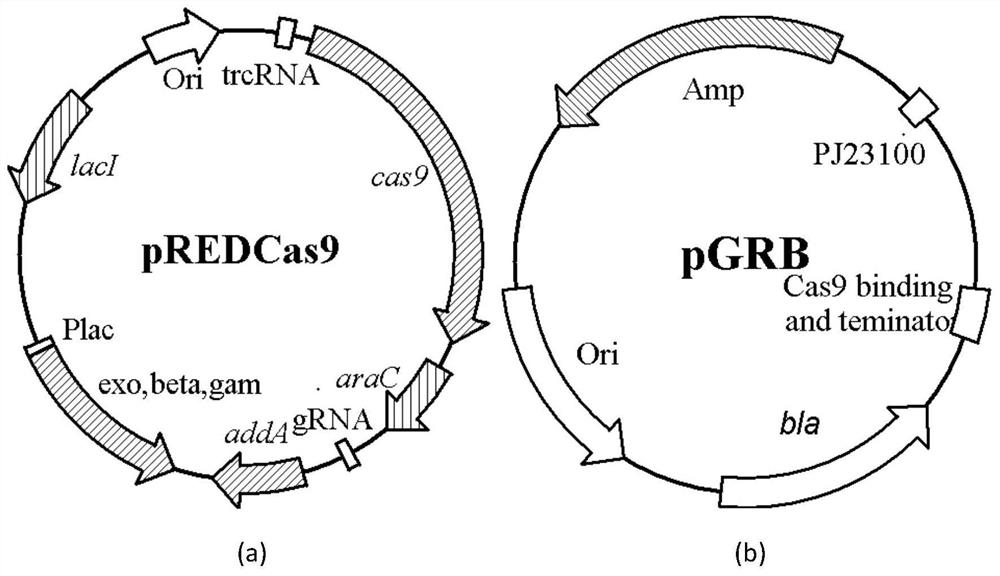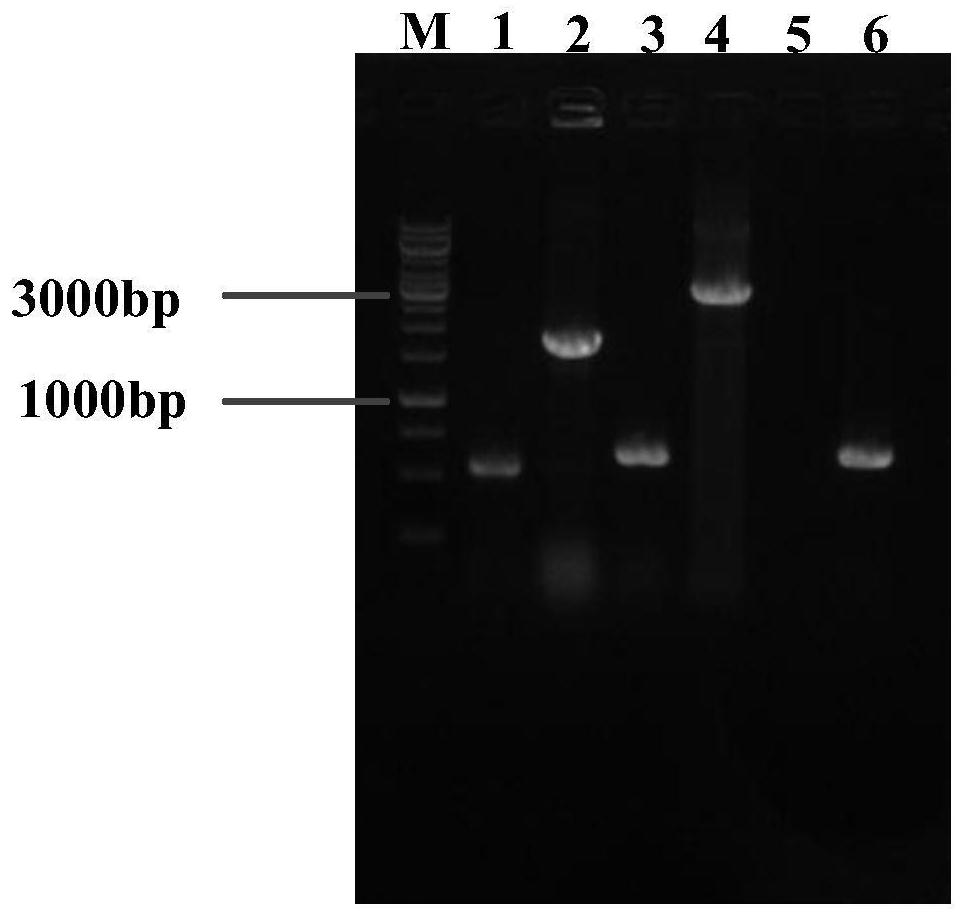A kind of genetically engineered bacteria producing l-histidine and its application
A technology of genetically engineered bacteria and histidine, applied in the field of genetic engineering
- Summary
- Abstract
- Description
- Claims
- Application Information
AI Technical Summary
Problems solved by technology
Method used
Image
Examples
Embodiment 1
[0034] Construction of strain E. coli WHY3-1.
[0035] 1 Methods of gene editing
[0036] The gene editing method used in the present invention is carried out with reference to the literature (Li Y, Lin Z, Huang C, et al. Metabolic engineering of Escherichia coli using CRISPR–Cas9 mediated genome editing. Metabolic engineering, 2015, 31:13-21.), the method The two plasmid maps used are in the appendix figure 1 . Among them, pREDCas9 carries gRNA expression plasmid pGRB elimination system, bacteriophage λ Red recombination system and Cas9 protein expression system, spectinomycin resistance (working concentration: 100mg / L), cultured at 32°C; pGRB uses pUC18 as the backbone, including the promoter J23100, gRNA-Cas9 binding region sequence and terminator sequence, ampicillin resistance (working concentration: 100mg / L), cultured at 37°C.
[0037] The specific steps of this method are as follows:
[0038] 1.1 pGRB plasmid construction
[0039] The purpose of constructing the plas...
Embodiment 2
[0101] Utilize described genetically engineered bacteria E.coli WHY3-1 to ferment and produce histidine as follows:
[0102] (1) Cultured in shake flasks
[0103] Slant culture: Streak inoculation of -80°C preserved strains on the activated slant, culture at 37°C for 12 hours, and passage once;
[0104] Shake flask seed culture: Scrape a ring of slanted seeds with an inoculation loop and inoculate in a 500mL Erlenmeyer flask containing 30mL of seed medium, seal with nine layers of gauze, and incubate at 37°C and 200rpm for 6-8h;
[0105]Shake flask fermentation culture: Inoculate 10-15% inoculum into a 500mL Erlenmeyer flask with fermentation medium (final volume is 30mL), seal with nine layers of gauze, 37°C, 200r / min shaking culture, during the fermentation process by supplementing Add ammonia to maintain pH at 7.0-7.2; add 60% (m / v) glucose solution to maintain fermentation;
[0106] The composition of the slant medium is: glucose 1-5g / L, peptone 5-10g / L, beef extract 5-1...
Embodiment 3
[0117] Fermentation experiment of E.coli WHY3-1 on 5L tank.
[0118] The strain E.coli WHY3-1 constructed in Example 1 is used as a production strain to produce histidine:
[0119] Slant surface activation: Streak inoculate the preserved strains of glycerol on the slant medium of the test tube, and incubate at 37°C for 12;
[0120] Seed culture: Take one activated fresh eggplant-shaped bottle slope, wash it with 150mL sterile water, inoculate it into a fermenter under flame protection, control the temperature at 37°C, automatically add ammonia water to control the pH at 7.0, and the initial aeration rate is 2L / min, the initial stirring speed is 200rpm, the DO value is maintained between 20-30% during the cultivation process, and the seeds are cultivated until the OD600 is about 15;
[0121] Fermentation tank culture: The fermenter seeds are connected to the seed solution with 15% inoculation amount (feeding to 450mL, and poured into the sterilized fermentation medium under fl...
PUM
 Login to View More
Login to View More Abstract
Description
Claims
Application Information
 Login to View More
Login to View More - R&D
- Intellectual Property
- Life Sciences
- Materials
- Tech Scout
- Unparalleled Data Quality
- Higher Quality Content
- 60% Fewer Hallucinations
Browse by: Latest US Patents, China's latest patents, Technical Efficacy Thesaurus, Application Domain, Technology Topic, Popular Technical Reports.
© 2025 PatSnap. All rights reserved.Legal|Privacy policy|Modern Slavery Act Transparency Statement|Sitemap|About US| Contact US: help@patsnap.com



